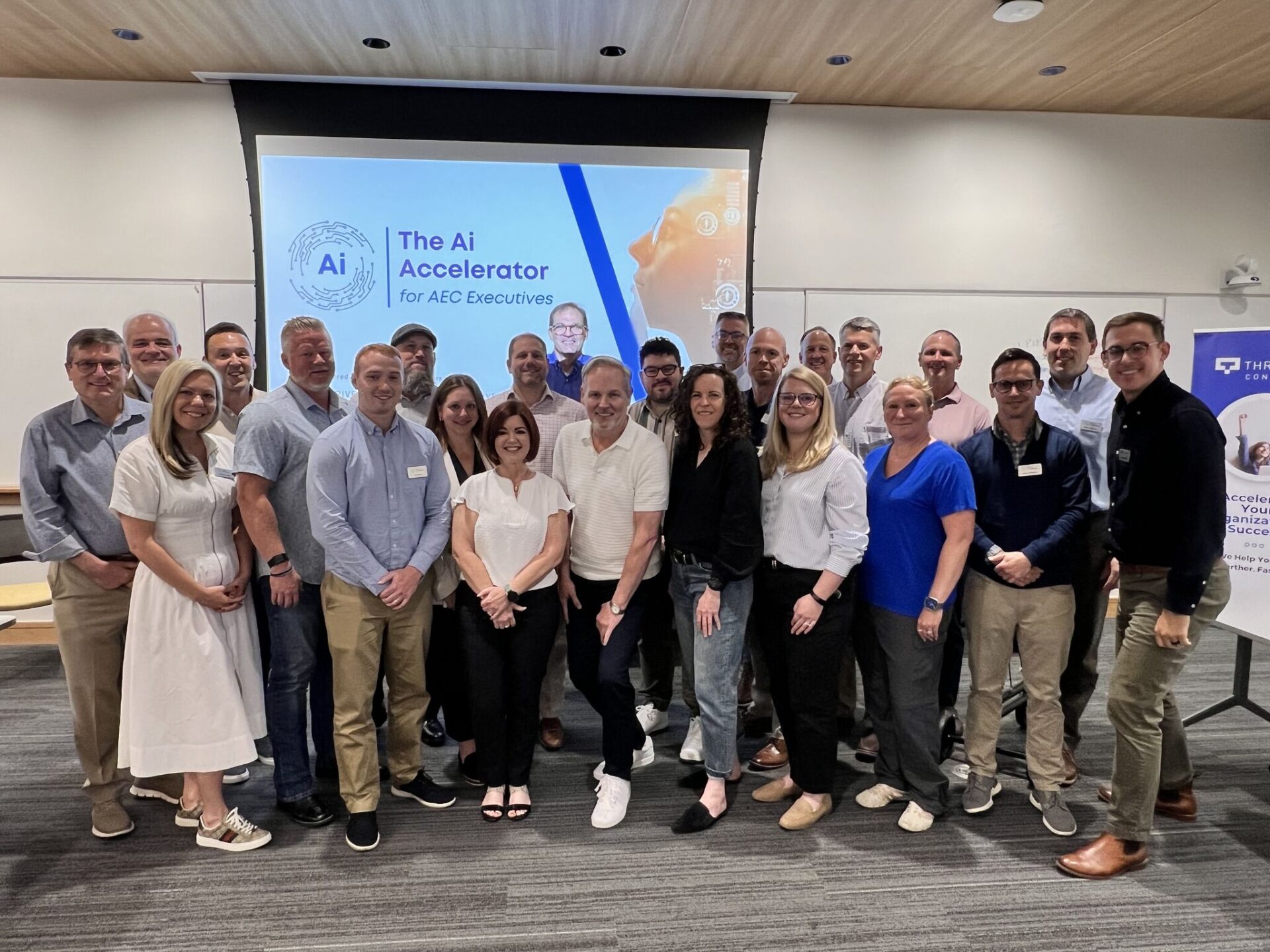Bob Higgins Recognized in Nashville Business Journal for AI Expertise

Senior consultant Bob Higgins was featured on the cover of the Nashville Business Journal and recognized for his expertise in helping business leaders use generative artificial intelligence to save time and grow their business.
Read a summary of the article below.
—————————————————————
The business world is changing, and leaders who don’t get on board will be left behind.
That’s what Bob Higgins, CEO of Barge Design Solutions, says about the rise of generative artificial intelligence.
Small, midsize businesses long term will become less valuable if they don’t embrace this technology in their own context,” Higgins said. “It gives leaders minutes and hours back in their day. There’s weeks that it gives me a whole day back in my week, and that’s powerful.”
It wasn’t until the beginning of 2023 that Higgins began exploring generative AI. After taking a course on AI prompt engineering taught by Vanderbilt University’s Jules White, a senior adviser to the chancellor for generative AI in education and a professor of computer science, he was hooked. Now, it’s become a part of his daily work routine, and he’s teaching his staff how to incorporate the tool.
A few months after taking that first course and putting what he’d learned to use, Higgins partnered with White to create Generative AI for Leaders, a free, four-hour online course that gives leaders a starting block for using AI at work.
To learn more about our AI masterclass for AEC leaders, click here.
The course is now part of Coursera’s worldwide Generative AI Academy, which aims to equip executives and their employees with skills needed to thrive in an AI-driven workplace.
“I tell people, ‘It’s not just about capturing the time so we can do more for work; it’s about capturing the time so I can make sure I’m home in time for dinner,’” Higgins said.
The use of artificial intelligence has boomed across the business world in the past year. As time goes on, more businesses are looking to use AI to grow their business, and many tech-startups are using AI as the very basis for what they do.
AI in general has a healthy layer of fear and skepticism surrounding it. To help business leaders understand the basics, and to understand it myself, I took White and Higgin’s course. Here’s what I learned.
What is generative AI?
When you think about AI, you might think first about AI-generated audio on TikTok, deepfake photos of Taylor Swift on X or the villain in your favorite sci-fimovie, like HAL-9000 from “2001: A Space Odyssey.”
Those examples range from the fantastical to the surreal. In the workplace, however, real -world examples of AI’s utlity are growing. For this article, we are focusing only on generative AI, a type of AI that can take inputs to create new content or even ideas.
“Generative AI is one of the most exciting things that I’ve ever seen,” White says in his course.
As might be the case when texting with a friend, the first response from a generative AI tool like Chat GPT might not be the one users want and need. In many cases, users will need to tweak and add context or guadrails to what they are prompting the AI to do.
Let’s address technical terms for a minute. The text users contribute is called the “input;” what AI returns to users is called the “output.” There are many different types of inputs users can use —the way they are phrased are called “prompts” — what people are referring to when they say “prompt engineering.”
For example, users can ask generative AI to act like a certain type of professional, like a personal assistant or a painter. This will tailor the output users receive. For instance, you can prompt ChatGPT with: “Act like my personal assistant: Take my meeting notes and organize them for me based on key topics.”
“I would just encourage people to pick one of those models [like ChatGPT] you have access to and engage with it,” Higgins said. “Start to ask it the fun things, learn about how to use it, but get into it.”
As users explore platforms like ChatGPT, those platforms can become familiar with the individual user and how they like their responses, based on the conversations over time.
ChatGPT has a free and paid version. The free version uses GPT-3.5, which focuses solely on text. The paid version — which costs $20 a month for plus or $25 monthly per person for a team — uses GPT-4, which can also analyze and comment on images and graphics, analyze large data sets and create things like Word documents and PowerPoint presentations.
“If you do the $20 a month, $240 a year, it’s going to save you a lot of money in the first month when you bring that into your life,” Higgins said. “It’s going to pay for itself each month with the way you interact with it.”
When the burden of administrative tasks are taken away, Higgins said users can instead focus on what matters.
“It helps leaders and the people that support leaders take away those tasks so you can get to a higher-value purpose that you’re trying to get accomplished in the first place,” Higgins said.
Higgins said he now spends less time putting together plans and presentations. It also frees up his headspace to focus on the more creative aspects of his job.
What can leaders use generative AI for?
When thinking about how leaders can use AI, think of it as creating shortcuts for getting smaller, tedious tasks done more quickly. No one wants to spend hours and hours doing inventory if it could be done in half the time with a few strokes of the keyboard.
Stephanie Coleman, chief talent development officer with the Nashville Area Chamber of Commerce, said she tends to be wordy when writing letters. In the past, she would scan her letters over and over, looking to eliminate words to make her sentences punchier. But now that she’s taken White and Higgins’ course, she puts her letters into ChatGPT and lets it do the editing for her.
“The biggest a-ha moment to me was just how much it’s capable of doing,” Coleman said. “The key is putting in the correct prompts so that you can get what you’re actually looking for.”
White has a framework for leaders using generative AI that he calls ACHIEve: aid human coordination, cut out tedious tasks, help provide a safety net to make sure things aren’t missed, inspire better problem solving and creativity and enable great ideas to scale faster.
“Generative AI is absolutely going to transform what we can do in the workplace, and it’s going to transform what humans can do,” White said. “I ask ChatGPT to do a task that I don’t think somebody here in Nashville and maybe the U.S. that could do it as well or as fast.”
For instance, White used ChatGPT to get his kids to try new foods. He had it create a short story with Pokémon characters where, in order to complete a quest, they had to try a new food. Where in Nashville could you get someone to whip up a story like that in just a few minutes?
According to Higgins, the value of businesses using ChatGPT is not to replace the people already employed, but to support those in place and take out some of their administrative tasks.
“It’s creating software on the fly, on your behalf, to help you solve a problem,” White said. “The real innovation that’s happening is that generative AI is in the process of replacing the GUI [graphical user interface, like your phone and computer operating systems] and is in the process of replacing programming as our dominant interface to computing.”
But White stressed this doesn’t mean there won’t still be a large demand for programmers and computer scientists.
“We’re still going to have GUIs, but we’re going to have a new interface, which is generative AI, that’s going to rapidly take over a lot of the tasks and dramatically expand our capabilities and what we can do with computing, and what an average user can do without having to have specialized knowledge in computer science,” White said.



